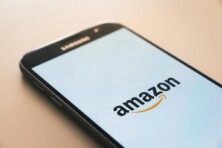Holidays are coming and they pose challenges for both merchants and customers amid the ongoing economic crisis. However, fintech solutions will help all parties involved to get through the holiday shopping with flying colours

Holidays amid the crisis pose challenges for both merchants and customers. Source: unsplash
“The most wonderful time of the year” may not be so exciting in 2022. Although gifts and decorations are already seen on stores’ shelves, rising costs, inflation, and interest rates are holding shopping prospects down.
Holiday spending outlook
After two years of exceptional demand, holiday spending in 2022 will look especially bleak. The US National Retail Federation expects holiday sales during November and December to rise between 6% and 8% from last year. However, when you consider the high inflation levels, such an increase is actually a decline.
If calculated with inflation in mind, the sales growth this year may be closer to the preceding five years, which averaged approximately 3.5%.
At the same time, in 2020, holiday sales rose 8.2% to $777.3 billion, as consumers consoled themselves with gifts during the pandemic. Furthermore, in 2021, holiday sales grew 13.5% and totalled $889.3 billion.
This year, experts forecast muted holiday spending. Although the average spending check may remain the same (around $833), this amount will buy fewer goods because of inflation. Moreover, consumers are not rushing to buy presents beforehand, leaving major retailers struggling with extra inventory.
Nevertheless, customers are still eager to spend this holiday season. If retailers manage to offer convenient and affordable solutions to help them cover gift-giving expenses, their holiday sales numbers will remain stable and satisfactory.
Buy Now Pay Later
One possible way to help merchants boost their sales while not demanding customers to splurge right away is to offer the ability to buy now and pay later. With “point of sale” BNPL loans from fintech companies like AfterPay, Affirm and Klarna, customers can pay for their purchases in instalments. Solutions like that typically incur no interest if paid on time.
One of the benefits of the “buy now pay later” services is that integrated online software solutions can be added to retailers’ native apps. Many millennial and Gen Z consumers prefer BPNL lending over other credit types as they value speed, usability and convenient technology not typical for older methods. Besides, BNPL approval happens instantly on the spot and requires no hard credit checks. Furthermore, BNPL loans have proven to increase cart conversions. For instance, AfterPay merchants typically witness a 22% average increase in cart conversions, while merchants supporting Klarna see a 30% average increase.
The positive aspects of BNPL solutions drive increased adoption by retailers. For instance, last year British luxury retailer Harrods partnered with Klarna ahead of the holiday season. In 2022, Ant Group has also added a new BNPL offer to its platform days before the annual 11.11 sale. Meanwhile, Australian fintech Zip has announced the availability of the physical BNPL Zip Card for in-store purchases in the US.
At the same time, the method can create challenges when shopping for gifts. It provides an illusion of enhanced spending capability. Although it may have started with high-ticket purchases, recent retail trends show that luxury items and large purchases are not the main BNPL drivers anymore. The most common purchases for BNPL today are mid-range items such as clothing, shoes, accessories, handbags, home decor, home improvement or appliances.
Easy loans encourage people to spend beyond their means. Thus, consumers are often miscalculating their future expenses. Moreover, they may be unable to keep up with the payment schedule, facing additional interest payments.

BNPL can create challenges when shopping for gifts. Source: unsplash
POS Lending
Point of sale (POS) lending is offered by financial institutions, credit unions and other traditional lending providers. It allows buyers to spread the cost of their payments. Unlike BNPL, such lending often comes with interest rates, which can be quite high. Besides, it requires a full credit check.
Nevertheless, POS lending is often the preferred method of purchase in instalments for an older audience due to its familiar terms. In addition, the credit method brings some benefits to both providers and consumers.
Allowing to spread the payments longer than 3 or 4 months (typical BNPL terms), POS lending lowers the monthly paid-out amount for the consumer while making it more profitable for the lender in the long term. Besides, a proper credit check means that the client is more likely to repay.
Nevertheless, POS lending doesn’t necessarily have to be slow and expensive. It is a rapidly growing market in the consumer finance industry, and there are many emerging fintech firms offering affordable and flexible credit variations. For instance, companies like Jifiti make it much easier for banks to implement POS financing. Meanwhile, platforms from Chargeafter and Skeps connect borrowers to multiple lenders in a standard, transparent process.
Cash advance for sellers
Customers are not the only ones needing some extra cash and flexible repayment options this season. Merchants may find themselves struggling to cover additional inventory, shipping materials, warehouse space, holiday marketing campaigns, etc.
Therefore, fintech companies like Payability offer cash advances designed specifically for e-commerce sellers. Besides, its instant advance service enables faster access to the profits generated from sales, significantly boosting one’s cash flow. Other popular financing methods for merchants include Amazon Lending, Shopify Capital, and more.
The amount of such an advance depends on your monthly sales revenue, as a rule. In addition, unlike a traditional loan that could take weeks or even months to get, fintechs offer quick advances that can be approved in as little as 24 hours.

Many customers fail to do their holiday shopping as they cannot access traditional banking services or have poor credit scores. Source: shutterstock.com
Alternative loan providers
Many customers fail to make a purchase as they cannot access traditional banking services or have poor credit scores. Small businesses, in their turn, also struggle to get extra financing as they may have little credibility.
However, some fintechs are ready to take the risk. Cooperation with alternative financing providers may be beneficial for both sellers and buyers as it opens up new opportunities.
For instance, Indian trade facilitator Aye Finance is a commercial institution funding MSMEs in an innovative way. The lender builds credit insights through a variety of available business and behavioural data. Moreover, its cloud-computing architecture enables flexible delivery of customer service at an affordable cost.
In Canada, iCASH fintech startup offers short-term loans of up to $1,500. The company’s loan products can meet the needs of all types of borrowers, including those with bad credit scores. By making timely loan repayments, borrowers who had credit issues in the past can gradually rebuild their credit scores and access other loan products in the future.
P2P lending platforms are a good variant not only for buyers but also sellers. For example, Faircent is pioneering the peer-to-peer lending & borrowing space in India with the largest RBI-registered NBFC P2P lending platform. In addition, B2B-focused fintech startup BharatPe now offers P2P investment and bank deposit products to its merchant partners. The platform helps the business community strive. Merchants may register as lenders and deploy their money against loans on these platforms, while also earning interest.
Variety of payment modes at the checkout
To attract money-cautious customers amid economic uncertainties, merchants should care about their payment comfort. Therefore, adding popular local payment methods may become a favourable factor. No matter the type of business you have, it’s good to offer customers at least a few alternative payment options.
For instance, digital wallet Venmo is now live as a payment option for select Amazon customers. PayPal has been closely cooperating with Apple to make it fully available for all US Amazon customers this holiday season.
Contactless payments with QR codes also provide small-scale sellers with a way to support in-demand digital payment options and expand their touch-free payment capabilities. Besides PayPal products, some of the best “scan to pay” apps include SquarePOS, PaymentCloud, Toast POS, or Clover POS.
In addition, accepting contactless payments today is a must for any seller. While dedicated hardware may be expensive, SoftPOS solutions are cheap and handy. We have previously reported on the top SoftPOS choices for the most demanding merchants.
Conclusions
Both merchants and lenders need to be acutely aware of their target audiences and their needs and be able to adjust their payment solutions accordingly. The key aspects to sales success this holiday season remain payment flexibility, fast and affordable credit lines, and customer-centeredness.
SEE ALSO:
Savings of US Consumers Slowly Shrink but They Can Still Fuel a Year of Healthy Spending









